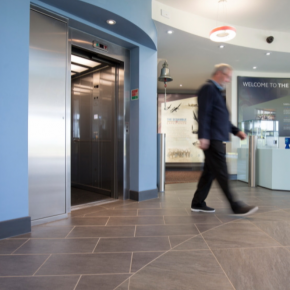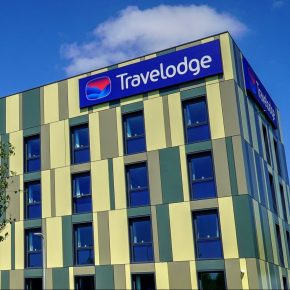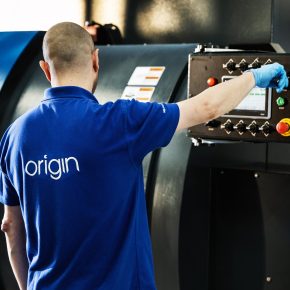
Stannah: The importance of lift servicing for lift owners
Being a responsible lift owner or building manager, you have a duty to ensure that your lift is safe to use. With this in mind, it’s critical that lift servicing is carried out regularly. How often lifts require inspecting or servicing depends on the type, usage frequency and the number of floors. A lift, throughout its life, should require regular lift servicing, routine lift inspections (statutory or otherwise) and a programme of planned preventative maintenance in place. Stannah has more…
How often should a lift be serviced?
While current UK law requires a lift service or maintenance visit at least every six months if the installation is carrying passengers and once every 12 months if the lift is used only for goods, these are minimum requirements and need viewing as such.
Low usage passenger carrying lifts may only require two services a year to fulfil legal requirements. In contrast, high-frequency use installations in larger and more frequented premises may need more regular servicing to prevent costly breakdowns and possible interruptions to service.
As lifts contain mechanical components, they are prone to wear and tear. In addition, electronic systems may need re-programming, and safety systems should be regularly checked. Sometimes additional preventative maintenance may be prudent and necessary to achieve optimum performance and minimise the risk of downtime.
What is lift servicing?
Lift servicing is where an engineer undertakes a planned preventative maintenance programme as agreed with you; doing so helps to prevent costly breakdowns through regular checks and replacement of worn parts to keep your lift performing at maximum efficiency. Most independent lift companies, like Stannah, maintain and service all types, makes and models of lifts.
What type of checks are involved?
The regular checks include detailed inspections of the interior and exterior of the lift car, as well as checks in the machine room or control panel, the pit, and the lift shaft. Depending on the service interval, a standard service visit from a reputable provider could include some of the following checks:
– Landing and car doors and their interlock
– Shaft structure
– Main drive system components
– Signs, locks and keys
– Suspension ropes and chains
– Overload detection devices
– Electrical devices (including earthing, earth bonding, safety devices, selection of fuses, etc.)
– Braking systems (including buffers and overspeed devices)
– Alarms and communication equipment
– Lubrication and smooth functioning
– Emergency backup and communication system
This list is not exhaustive. Hydraulic installations and traction systems may require further system tests.
What does a service visit involve?
During a service visit, an engineer will check the safety features of the lift, as well as clean, lubricate and adjust all components for optimum performance. A Stannah engineer would then complete a service screen on his laptop, stating the work carried out and detailing any comments, such as suggested repairs or works of improvement not covered by the contract. A report should be issued after each engineer visit as a maintenance record.
What legislation do I need to comply with?
Insurers will typically require copies of documentation and service history, plus compliance with the following current legislation;
LOLER (Lifting Operations and Lifting Equipment Regulations 1998)
The Equality Act 2010 (to accommodate the mobility needs of disabled persons)
PUWER (The Provision and Use of Work Equipment Regulations 1998)
Will my lift be out of action while an inspection or service is taking place?
Yes. The engineer will need to check many items within the shaft/structure and motor room, so the lift will be ‘out of service’ while the engineer is on-site.
Visit Supplier's page
Latest news

21st November 2024
Altro distils style and performance at English Spirit
English Spirit Distillery has used an extensive package of Altro products front and back of house, in their new visitor centre café, shop and viewing area for the working distillery.
Posted in Articles, Bathrooms, Bedrooms & Washrooms, Building Industry News, Building Products & Structures, Building Systems, Case Studies, Floors, Interior Design & Construction, Interiors, Kitchens, Restoration & Refurbishment, Retrofit & Renovation, Timber Buildings and Timber Products, Walls
21st November 2024
Abloy UK creates bespoke locking solution for Secure Information Boxes
Abloy UK has supplied The Safety Letterbox Company Ltd with a bespoke Sentry CL811 Camlock for use in its Secure Information Boxes, assisting life safety and complying with new regulations and legislation for high rise buildings.
Posted in Access Control & Door Entry Systems, Architectural Ironmongery, Articles, Building Industry News, Building Products & Structures, Building Regulations & Accreditations, Building Services, Case Studies, Facility Management & Building Services, Health & Safety, Posts, Restoration & Refurbishment, Retrofit & Renovation, Security and Fire Protection
20th November 2024
CUPA: CUPACLAD enhances hotel aesthetics with a creative natural slate façade
Situated at the northern edge of a newly developed retail park near Bristol, the Abbey Wood Travelodge was conceived as part of the company’s new Budget-Luxe line of hotels – it features CUPACLAD, from CUPA PIZARRAS.
Posted in Articles, Building Industry News, Building Products & Structures, Building Systems, Case Studies, Cladding, Concrete, Cement, Admixtures, Facades, Posts, Restoration & Refurbishment, Retrofit & Renovation, Walls
20th November 2024
Origin launches in-house powder coating facility
Origin’s latest investment is set to redefine industry standards as it launches its own in-house powder coating facility.
Posted in Aluminium Products, Articles, Building Industry News, Building Products & Structures, Building Systems, Doors, Glass, Glazing, Innovations & New Products, Paints, Coatings & Finishes, Restoration & Refurbishment, Retrofit & Renovation, Site Preparation, Windows
 Sign up:
Sign up: 